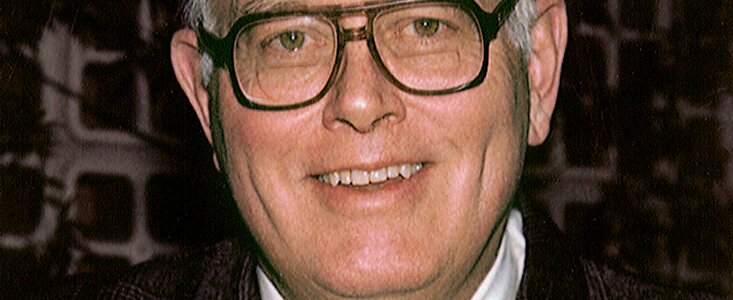World's Premier Solar Telescope Named after its Creator Dr. Richard B. Dunn
21 September 1998
The National Science Foundation will honor Dr. Richard B. Dunn on September 30, 1998, by renaming the Vacuum Tower Telescope of the National Solar Observatory at Sacramento Peak, New Mexico, as the Richard B. Dunn Solar Telescope, after its creator. This recognizes Dunns long and distinguished career and his contributions to the world's most advanced solar instrumentation, which have greatly increased our understanding of the physics of the Sun. The rededication ceremony to mark this important event will be held at the National Solar Observatory in Sunspot, New Mexico, and will be the centerpiece of a workshop on High Resolution Solar Physics, also dedicated to Dr. Dunn in recognition of his lifetime contributions to solar research. Scientists from all corners of the world, including Austria, China, Germany, India, Ireland, Italy, Japan, The Netherlands, Norway, Russia, Siberia, Spain, and Sweden will attend the festivities.
When it was put into service in October 1969 by the US Air Force, which at the time operated the Sacramento Peak Observatory, the Richard B. Dunn Solar Telescope revolutionized the capabilities of solar telescopes. By removing the air from the telescope and by introducing other innovative concepts in its design, Dunn overcame many hurdles which limited solar telescope performance up to that moment. Because of the large amount of heat collected, earlier solar telescopes suffered from serious deteriorations in image quality resulting from the heating of the air in the telescope, an effect similar to shimmering frequently observed when viewing distant objects above a hot highway. By evacuating the telescope and by careful control of the telescope environment at the telescope entrance, Dunn removed these image deterioration effects. The success of his new vacuum telescope concept is best measured by its implementation in every major solar telescope constructed since then. They can be found in the United States and at many places abroad, in far-away locations like Huairou and Kunming in China, the Canary Islands off the west coast of Africa and Udaipur in India. Although the Dunn Telescope is the oldest of these vacuum telescopes, it is still the best instrumented one, and its imaging quality exceeds all of them at the diffraction limit of its 76 cm (30 inch) aperture.
"I am delighted that we are able to recognize Dick Dunns many contributions during his past forty-five years of service to the National Solar Observatory and to solar astronomy. Dick gave heart and soul to this telescope. Now he is giving it his name, too, which is quite fitting!" said Dr. Goetz K. Oertel, President of the Association of Universities for Research in Astronomy, Inc.
Last January Richard Dunn received the George Ellery Hale Prize of the American Astronomical Society in recognition of his "outstanding contributions to the field of solar astronomy over an extended period of time," the highest recognition conferred by the society in the field of solar research. Dunn, in addition to being a telescope and instrument builder par excellence, has used his creations to substantially increase mankind's knowledge of the Sun, our "home star." Much of our current day knowledge of the solar atmosphere, including its magnetic field structure, solar flares, prominences and the solar corona result from Dunn's work. Solar astronomers worldwide have called on his expertise in designing their telescopes. He has given generously of his time and energy to such projects, and thus has been involved in the design of far more solar telescopes than anyone else.
Dunn began his career at Sacramento Peak in 1953 while a graduate student working toward his Ph.D. at Harvard University. He has been at the Observatory ever since.
Notes
Editors: This press release, including a high-resolution version of the image, is available electronically over the Internet via http://www.noao.edu/
The Association of Universities for Research in Astronomy, Inc. (AURA) operates NOAO under cooperative agreement with the National Science Foundation.
Contacts
Suzanne Jacoby
NOAO Press Officer
Tel: (520) 318-8364
Email: sjacoby@noao.edu
Rex Hunter
Tel: 505-434-7075
Email: rhunter@noao.edu
Dr. Jacques Beckers
Tel: 520-318-8328,
Email: jbeckers@noao.edu



